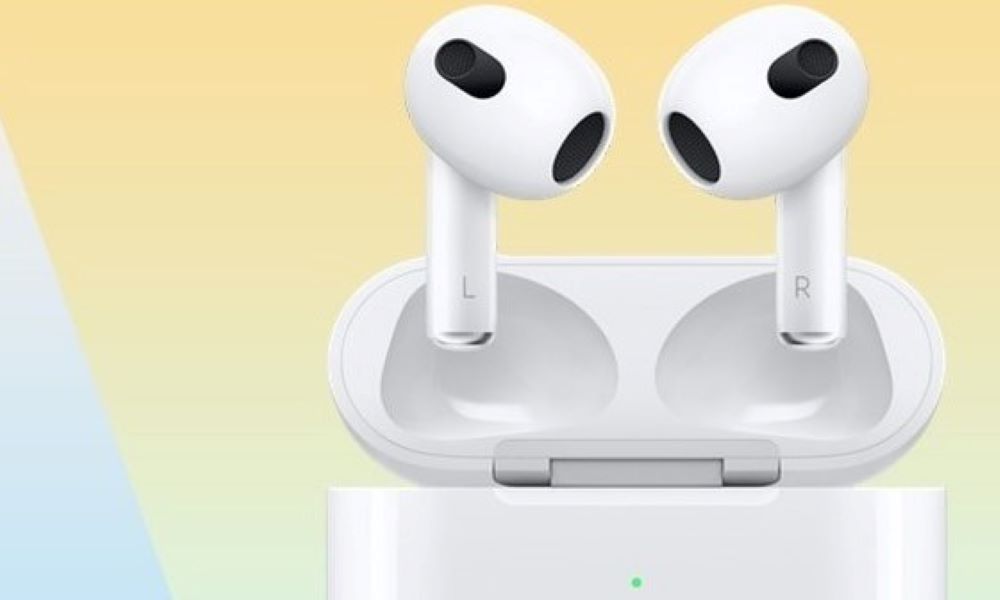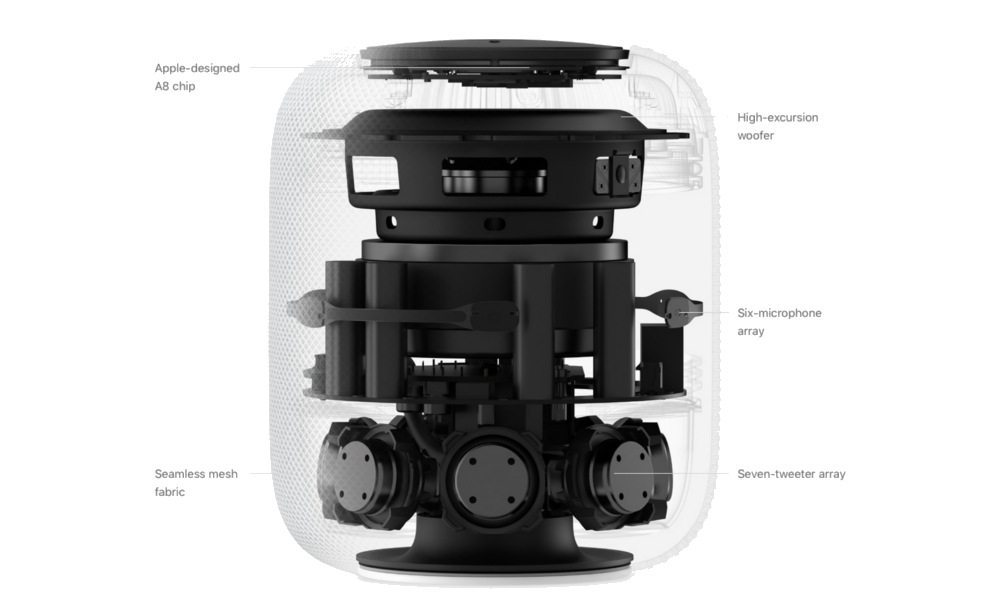Bluetooth Is Holding Back Apple’s AirPods Ambitions
 Credit: Apple
Credit: Apple
Toggle Dark Mode
The work that Apple has been doing in striving for higher-quality audio experiences over the years proves that it has both the skill and the will to take Apple Music and its AirPods to a whole new level, but unfortunately, it appears that the biggest thing standing in its way now may be catering to standard that just can’t handle what Apple wants to deliver.
In a recent interview with What HiFi (via 9to5Mac), Apple’s VP of Acoustics, Gary Geaves, tacitly admitted that Apple has been doing everything it can to push the envelope of what’s possible with Bluetooth, but that the company’s engineering teams have begun to hit a wall.
This isn’t necessarily a big surprise, of course. It’s already common knowledge that even Apple’s most expensive AirPods Max can’t provide a Lossless Audio experience, due entirely to the fact that Bluetooth doesn’t have the bandwidth needed to deliver the uncompressed audio stream.
This isn’t a limitation of the AirPods Max — it’s entirely a limitation of Bluetooth. We discussed this at length in the spring, shortly after Apple announced its Lossless Music initiative, but basically, it comes down to the fact that lossless audio requires 1,411kbps (or 1.4Mbps) or bandwidth, and even under perfect conditions, Bluetooth can only deliver around 1Mbps.
However, conditions are rarely even nearly that ideal. Like Wi-Fi, Bluetooth performance diminishes with distance, and physical obstacles like clothing and even your own body can create enough interference to slow things down. In fact, it wasn’t uncommon in the early days of Bluetooth headsets to experience signal dropouts simply by putting your iPhone in your right pocket while wearing a headset in your left ear.
Hence, the realistic maximum throughput for Bluetooth audio is somewhere in the 320Kbps range, and that’s basically what Apple’s own AAC codec tops out at. A few competing codecs, such as Qualcomm’s aptX and Sony’s LDAC, can theoretically deliver higher bandwidth — and therefore better audio quality — but that only happens under those ideal conditions, and even these codecs typically operate in the same 320kbps range as AAC.
Apple’s Acoustics Team
The What HiFi interview provides some interesting insights into how Apple views its acoustics efforts, which appears to be an interesting fusion between engineers and artistic folks.
Gary Geaves is the man ultimately responsible for these efforts, and while he isn’t “the man who made the AirPods,” he’s definitely one of the driving forces behind all of Apple’s work in acoustics.
Geaves joined Apple about a decade ago to “get more focus on audio,” and of course it was his team behind the incredible acoustics engineering on the original HomePod.

Unfortunately, Apple’s first attempt at a smart speaker failed to gain the traction that it arguably deserved. It was a brilliant feat of acoustics, but also ended up being too niche to really catch on with anybody but the most dedicated Apple fans.
However, the HomePod was also a good demonstration of what What HiFi calls “the obsessive nature of Apple’s Acoustics Team,” which has a “serious appetite for acoustic problem-solving.” It’s brought much of that same focus to Apple’s more successful audio products as well, including of course the AIrPods, AirPods Pro, and AirPods Max, not to mention initiatives like Spatial Audio and Dolby Atmos support on everything from the AirPods Pro and AirPods Max to the Apple TV 4K and now-discontinued HomePod.
When it came to the AirPods 3, Geaves explains that his team had to put all of its best efforts into figuring out how to create a “non-burrowing” design that sits in the ear canal, rather than wedging into it, while still delivering top-notch sound quality — and doing so across a wide variety of ear types.
We started with looking very closely at the strengths of the original AirPods, and we know many people really like the effortless open fit that doesn’t stick into your ear canal and rests comfortably on your ear. That doesn’t create a seal, which is what people like, but it creates challenges for the audio team.
Gary Geaves, Apple VP of Acoustics
The key answer, Geaves says, was the Adaptive EQ that Apple introduced with the AirPods Pro, allowing the AirPods 3 to use an inward-facing microphone that monitors what’s coming out of the speaker and how it’s bouncing off the inside of your ear, and then tunes the bass and midrange frequencies to produce the optimal sound for each person.
We respect music and the emotional impact that it can make, and we want to deliver this natural experience.
Gary Geaves, Apple VP of Acoustics
Geaves also explains how Apple works very closely with the artistic side of the equation. The AirPods family of headphones aren’t built based solely on what scientists and engineers think sounds good. Apple refines the experience by not only working closely with an expert team of critical listeners and tuners from the pro audio industry, but even many of the artists who created the music to ensure that they’re delivering the intended sound as accurately as possible.
We have whole teams of people who deal with the kind of interaction between engineering and artistic folks – they don’t let me near artistic folks because I’m too much of a fan to be honest with you – but we do take feedback from people delivering the content.
Gary Geaves, Apple VP of Acoustics
For all of its incredible efforts in acoustics, however, the biggest thing that’s still holding Apple back is the limitations of Bluetooth technology, and Tom Parsons of What HiFi posed that exact question to Geaves: “Whether the use of Bluetooth is holding back his hardware and stifling sound quality.”
In true Apple fashion, Geaves gave a somewhat veiled response, saying only that his team works to do everything it can within the limitations of Bluetooth, but that ultimately they really would “like more bandwidth.”
We have to concentrate very hard on squeezing the most that we can out of the Bluetooth technology, and there’s a number of tricks we can play to maximise or get around some of the limits of Bluetooth. But it’s fair to say that we would like more bandwidth and… I’ll stop right there. We would like more bandwidth.
Gary Geaves, Apple VP of Acoustics
It’s obvious that Apple is already working on a way to overcome Bluetooth’s current limitations, but we can only speculate as to what its plans may be for that. Parsons suggests that it “could be as simple as switching to Qualcomm’s recently announced aptX Lossless format,” but it’s also more likely Apple is working on an alternative of its own.
Assuming that Apple sticks with Bluetooth at all, our take is that it’s more likely to go with the Scalable to Lossless (SLS) extension to the AAC codec that it’s already been using for the past two decades, as it make more sense to build on its current technology rather than switch to something entirely different — not to mention that aptX would require Apple to deal with Qualcomm on yet another front, and it’s fair to say that Apple would prefer not to go there.
Of course, this also assumes that Apple stays with Bluetooth in the first place. While AAC-SLS (also known as HD-AAC) would provide near-lossless quality, it still wouldn’t be true lossless. It would merely be competitive with Sony’s LDAC and Qualcomm’s improved aptX codec. At the end of the day, the only way Apple is going to get truly lossless audio delivered to its headphones is to either switch over to Wi-Fi or build its own proprietary wireless protocol from the ground up.






